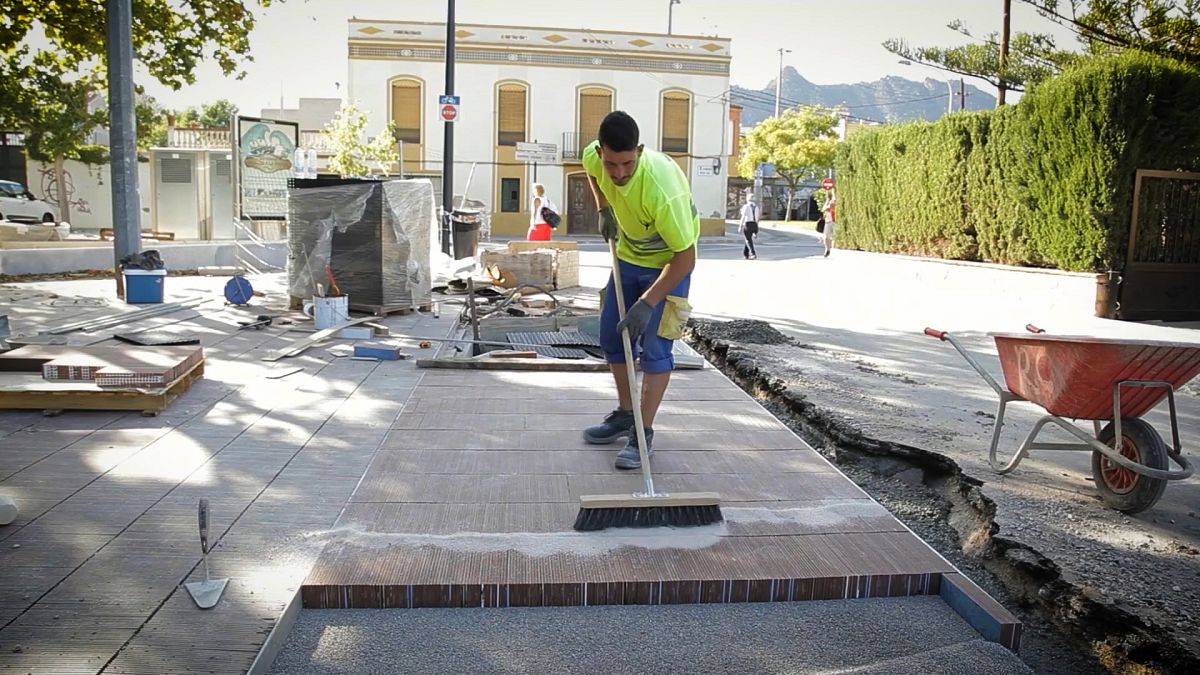Spain, like other countries, is having to adapt to more extreme weather. And, in the Valencia region, EU-funded innovation has spawned a new solution, right under people’s feet.
The concept of footpath paving has been redesigned using ceramic tiles, placed and spaced on their sides, to maximise absorption of water into the ground.
Experts say it wouldn’t prevent the type of disaster seen last year, with the overflow of a river system, but would improve drainage capacity and reduce flooding risks when heavy rain hits urban areas.
Cities with a lot of impermeable surfaces are basically artificial slot canyons.
When it rains in a forest millions of tons of cool thermal mass is stored in the ground, and when the sun shines all of that mass has to be heated up in order to raise the temperature. Evapotranspiration from trees and other plants provides further cooling using that same water.
In a slot canyon or impermeable urban environment the water quickly runs off into rivers, with none of it (or very little of it) being retained. This has the duel effect of causing flash floods when it rains (as water rushes down the channels instead of being absorbed over a wide area) and a hot microclimate when its not.
When I see these technologies, I just think about how they would probably be uneconomic in cold environments on account of frost wedging. They would crumble much faster than regular cement and pavement, I’d suppose
Good point about frost heaving - these systems can actually be modified for cold climates with deeper drainage layers and frost-resistant ceramics, but it definetly increases the installation cost compared to traditional pavements.
@SteveKLord ’ Tests, carried out as part of its work, have shown that water can be absorbed at a rate of 10,000 litres per square metre, per hour. ’
1 square meter of surface area at 1 cm is 10 litres, so a square metre would have to pass 10 metres (1000 cm) deep of water per hour, or a velocity of 2.78 centimetres per second, unless I did the math wrong.
That seems like a very high number for a ceramic to filter, even considering the gaps.
The ceramic tiles might have that rate of water flow, but the ground beneath it probably doesn’t.




